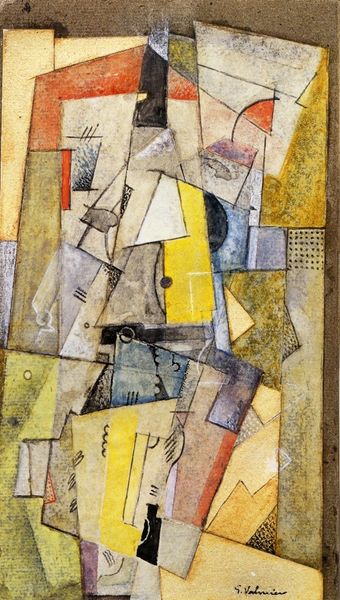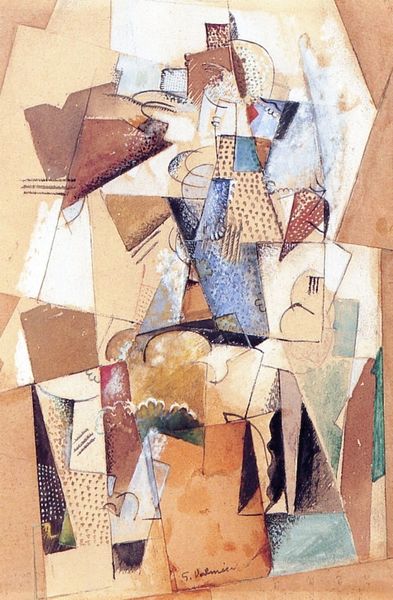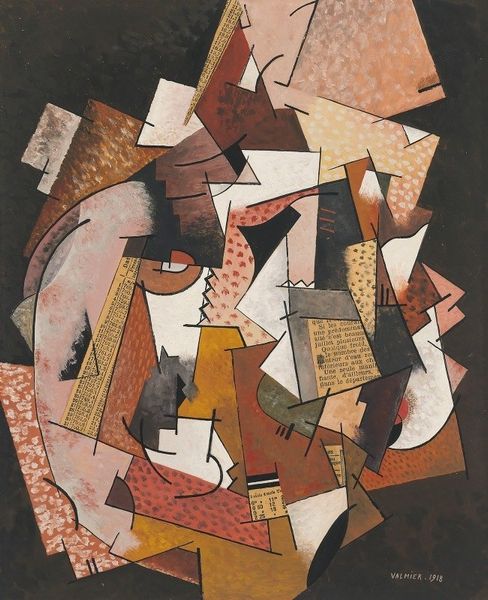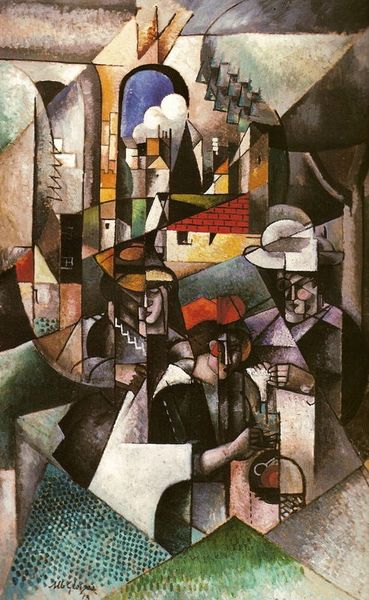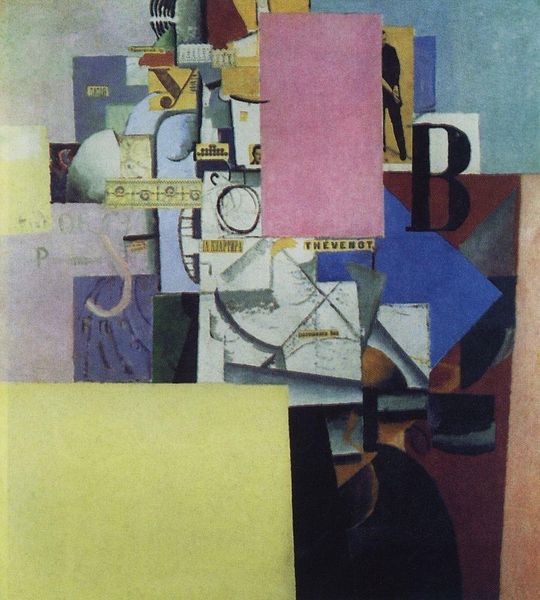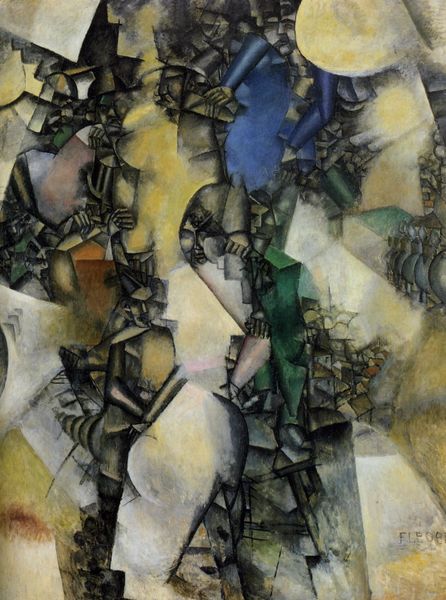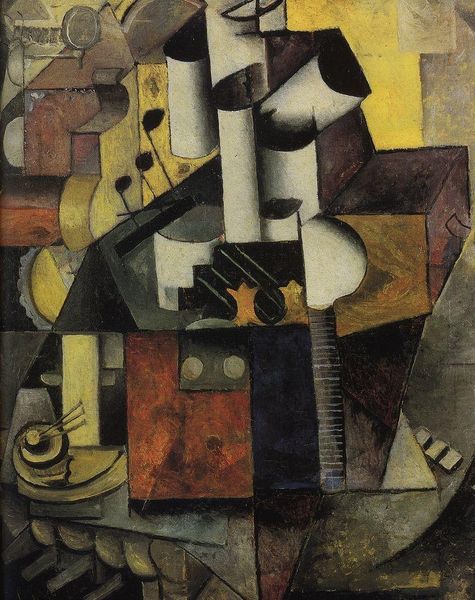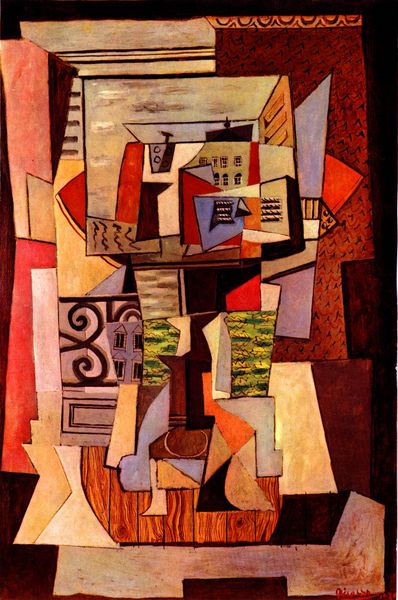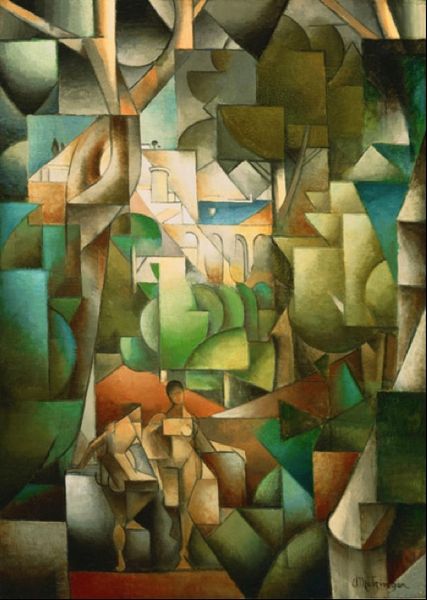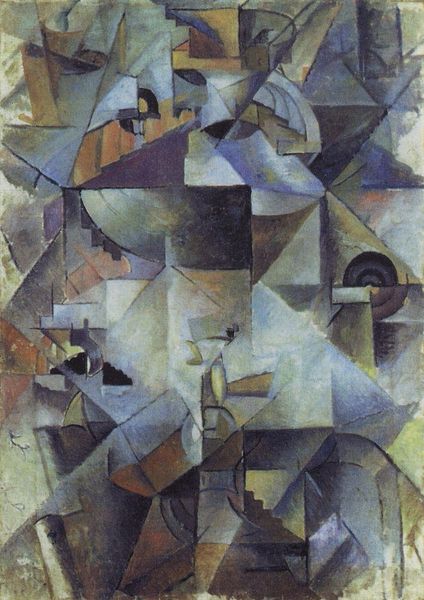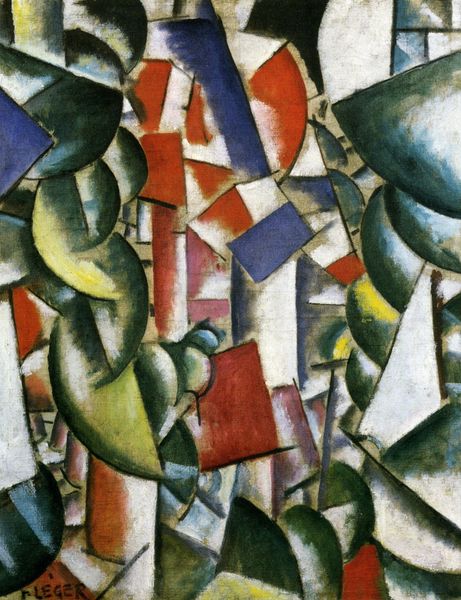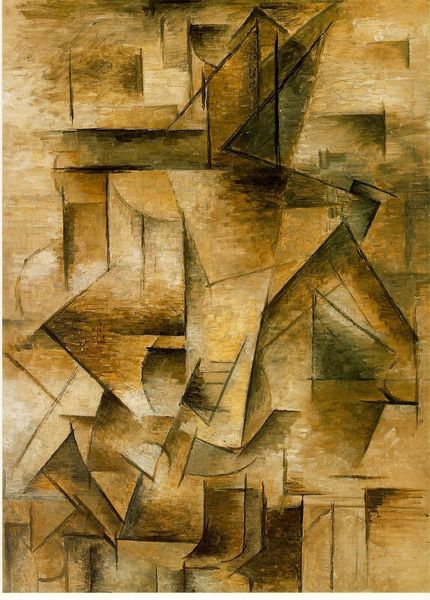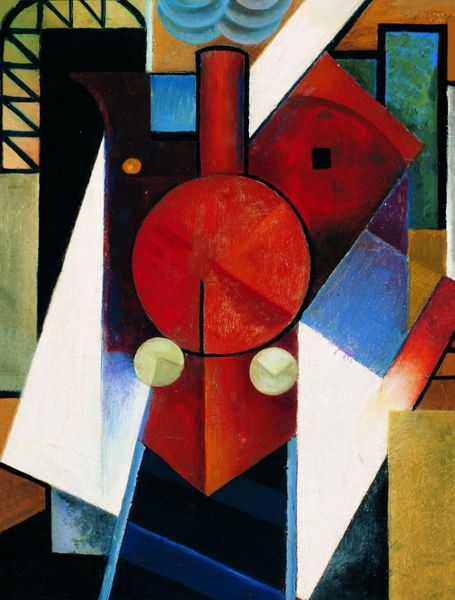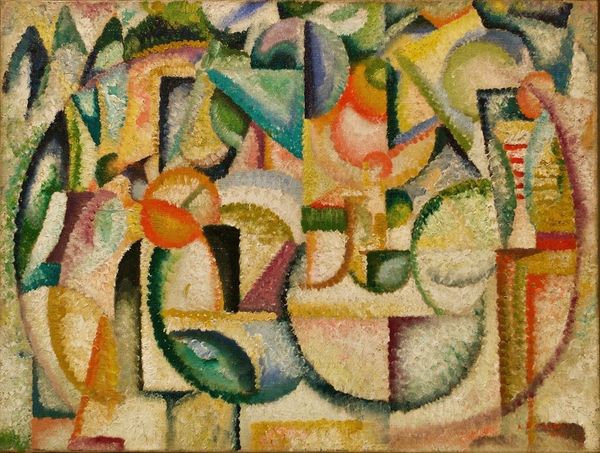
mixed-media, painting, oil-paint
#
cubism
#
mixed-media
#
abstract painting
#
painting
#
oil-paint
#
oil painting
#
geometric
#
abstraction
#
mixed media
#
modernism
Copyright: Public domain
Curator: Georges Valmier's "Composition," created in 1919. A remarkable example of Cubist experimentation. Editor: Immediately, I see a fractured world, a cacophony of shapes yearning for structure. The oil paint gives it a rich, almost tactile quality. Curator: The materials here are crucial; the oil paint on canvas, typical for fine art at the time, allows Valmier to explore color and texture in ways not readily available in other mediums. This was the Modernist artist's standard kit, reflecting a certain art-historical hierarchy being both embraced and challenged here. Editor: Exactly. We can view it within the post-World War I context, a time of reconstruction and reevaluation. Abstraction served as a powerful visual language. How do you view Valmier’s break with figurative form in this particular era? Curator: His shift towards abstraction reveals his interest in simplifying reality into basic geometric forms, thus echoing his socio-political milieu marked by fragmentation and chaos. Cubism also encouraged dismantling traditional forms, so it mirrored society's rejection of past norms. Editor: Agreed. The painting itself feels like an exploration of those emerging social dynamics through visual metaphors. Curator: And if we consider the gallery context – imagine it hanging alongside other avant-garde works of the period. A challenge, an affront to the established artistic order. Editor: I keep noticing that central black form; it anchors the work, preventing it from total visual collapse. How deliberate do you think this sense of constrained dynamism was? Curator: Extremely deliberate. Restrained colors and forms, each individually considered. But did these radical departures lead to greater societal inclusivity and progressiveness, as some modernists may have hoped? A question for constant re-evaluation! Editor: Absolutely. These forms also provide insight into the period’s values regarding artistic production and expression of ideas. A window into understanding that moment. Curator: Indeed, through analyzing “Composition”, the making of art unveils connections to complex narratives. Editor: It highlights that art never exists in a vacuum; it’s a product of material processes, social circumstances, and the constant dialogue between past and present. Thank you for this.
Comments
No comments
Be the first to comment and join the conversation on the ultimate creative platform.
